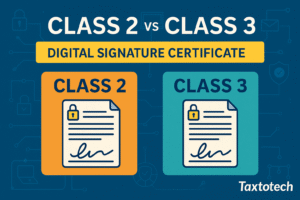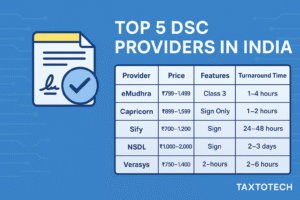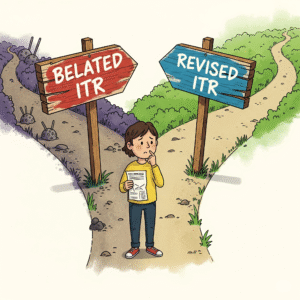Tax season can often feel like navigating a dense jungle, armed with a compass that only points vaguely north. For years, tax software has helped by providing a map, but the rise of Artificial Intelligence (AI) is transforming these tools into sophisticated digital guides, capable of leading you through the wilderness with unprecedented precision. But with so many options now integrating AI, how do you choose the right one to be your personal digital tax guide?
At Taxtotech, we understand that selecting the right tools is paramount to a stress-free and financially optimized tax season. This article will cut through the noise, offering a clear comparison of leading AI tax software platforms and highlighting the key features that truly set them apart. Whether you’re a first-time filer, a seasoned investor, a small business owner, or a gig worker, understanding these differences is crucial to finding your perfect tax preparation partner.
The Evolution of Tax Software: Why AI Makes the Difference
For decades, tax software has served as an essential tool, automating calculations and guiding users through IRS forms. From desktop installations to cloud-based solutions, the journey has been one of increasing convenience. However, traditional software largely functioned as a sophisticated calculator and form-filler, relying heavily on user input and knowledge.
The integration of AI marks a paradigm shift. AI tax software goes beyond data entry by actively assisting, advising, and optimizing. It leverages Natural Language Processing (NLP) to understand your queries, Machine Learning (ML) to learn from your financial data, and advanced analytics to identify every possible deduction and credit. This transformative capability is what makes choosing an AI-enhanced platform a strategic decision for your financial well-being.
Key Features to Look for in Your AI Tax Software
When comparing top AI tax software platforms, it’s essential to look beyond basic functionalities and focus on the true power of their AI integration. Here are the must-have features that define a cutting-edge digital tax guide:
- Intelligent Data Import & Categorization:
- Automated Scanning (OCR/NLP): Can it read and extract data directly from uploaded W-2s, 1099s, bank statements, and even photos of receipts?
- Smart Expense Categorization: Does it use AI to suggest or automatically assign categories to your transactions (e.g., “office supplies,” “business travel”) based on patterns and descriptions?
- Bank & Financial Account Integration: Seamlessly linking your financial accounts allows the AI to analyze your entire financial footprint for deductions.
- Proactive Deduction & Credit Identification:
- Dynamic Interviewing: Does it ask intelligent, adaptive follow-up questions based on your unique financial situation (e.g., if you have dependents, if you made energy-efficient home improvements)?
- Hidden Deduction Discovery: Does it actively scan for and suggest lesser-known deductions or credits you might qualify for, based on its analysis of your spending and income patterns?
- Real-Time Optimization: Does it show you the immediate impact on your refund or tax due as you input information, allowing for real-time adjustments?
- Real-Time Support & Guidance (Conversational AI):
- AI Chatbots/Virtual Assistants: Is there an integrated conversational AI that can answer your tax questions, guide you through forms, and troubleshoot issues 24/7?
- Contextual Help: Does the AI offer relevant explanations and guidance specific to the form or section you’re currently working on?
- Human Handoff: Can it seamlessly escalate complex queries to a human tax professional if needed, without losing the chat history?
- Error Detection & Audit Risk Mitigation:
- Anomaly Detection: Does the AI flag inconsistencies or potential errors in your data that could lead to IRS scrutiny?
- Compliance Checks: Is the software consistently updated with the latest tax laws and regulations, ensuring your return is compliant and minimizing audit risk?
- Audit Support Features: Does it offer resources or guidance in case of an audit, potentially even storing supporting documents securely?
- Security & Privacy:
- Data Encryption: Does the platform use industry-standard encryption (like AES-256) for your sensitive financial information?
- Multi-Factor Authentication (MFA): Does it offer MFA to protect your account from unauthorized access?
- Privacy Policy: Is its privacy policy transparent about how your data is used and protected?
Top AI Tax Software Platforms: A Comparative Overview
While the market is constantly evolving, several platforms are leading the charge in integrating sophisticated AI capabilities. Here’s a look at some of the prominent players you might consider for your digital tax guide needs:
Comparative Features of Leading AI-Enhanced Tax Software
| Feature/Platform | TurboTax (Intuit Assist) | H&R Block (AI-Powered Tools) | TaxSlayer (AI Support) | FreeTaxUSA (Integrated AI) | Specialized AI Accounting (e.g., Truewind, Docyt) |
| Intelligent Data Import | Excellent (W-2, 1099, bank, investments) | Very Good (W-2, 1099, limited bank) | Good (W-2, 1099) | Basic (W-2, 1099) | Excellent (deep integration with business finances) |
| Deduction Discovery | High (Intuit Assist proactively identifies complex deductions) | Good (AI suggestions based on profile) | Moderate (guided questions) | Basic (user-driven) | Very High (specific to business deductions, detailed categorization) |
| Real-Time Support | Advanced AI Chatbot & Human expert options | Strong AI Chatbot & Tax Pro assistance | Basic Chatbot & Human assist | Limited Chatbot | Dedicated AI virtual assistant, often with human oversight |
| Error/Audit Risk | Very Good (AI checks for inconsistencies) | Good (robust error checks) | Moderate | Basic | Very High (proactive compliance, anomaly detection) |
| Pricing Model | Higher-tier (tiered features) | Mid-to-High (tiered features) | Budget-friendly (tiered) | Very Affordable (flat fee) | Subscription-based (higher for comprehensive service) |
| Best For | Complex personal, self-employed | In-person help, online balance | Budget-conscious, simple returns | Simple returns, cost-effective | Startups, SMBs with complex accounting needs |
Note: The landscape of AI tax software platforms is dynamic. Features and pricing are subject to change, and new players consistently emerge. It’s always wise to check the latest offerings directly on their official websites.
Choosing Your Ideal Digital Tax Guide: Factors to Consider
Selecting the best AI tax software isn’t a one-size-fits-all decision. Your ideal digital tax guide depends on your specific needs:
- Complexity of Your Tax Situation:
- Simple W-2 filers: Even free options with basic AI can be a great fit for maximizing straightforward returns.
- Self-employed/Gig Workers: Look for robust expense tracking, mileage logging, and specific deduction identification features.
- Investors: Ensure the software can accurately handle capital gains/losses, crypto transactions, and dividend income, with AI features to optimize investment-related taxes.
- Complex Scenarios (e.g., rental properties, multi-state income): Opt for platforms with advanced AI capabilities that can handle nuanced rules and provide deeper insights.
- Budget:
- AI features often come in higher-tiered packages. Determine your budget and compare the value offered by different platforms. Some free options do integrate basic AI, but for comprehensive deduction finding, paid versions are usually necessary.
- Level of Assistance Preferred:
- Do you want AI to just find deductions, or do you need a virtual tax assistant to guide you step-by-step and answer real-time questions?
- Do you want the option to connect with a human tax professional for review or advice?
- Integration with Other Financial Tools:
- If you use specific budgeting apps, accounting software (for businesses), or investment platforms, check for seamless integration capabilities to maximize AI’s data analysis power.
- User Interface and Ease of Use:
- Even the smartest AI is only effective if the software is intuitive and easy to navigate. Look for clean interfaces, clear instructions, and a smooth user experience.
Scenario-Based AI Tax Software Recommendations
| Your Tax Scenario | Recommended AI Software Features | Example AI-Enabled Platforms (Check Latest) |
| Simple W-2, No Itemizing | Basic AI for error check, simple prompts. | Cash App Taxes (basic AI), FreeTaxUSA (integrated AI) |
| Self-Employed / Gig Worker | Advanced expense categorization, mileage tracking, deduction discovery. | TurboTax Self-Employed (Intuit Assist), H&R Block (AI for business deductions) |
| Investors (Stocks, Crypto) | Capital gains/loss optimization, crypto transaction tracking, portfolio sync. | TurboTax Premier/Deluxe, specialized crypto tax software (often integrates with tax prep) |
| Homeowners with Specific Deductions | AI for property tax, mortgage interest, energy credits, property management. | TurboTax, H&R Block (their advanced versions) |
| Small Businesses (Complex) | Integrated bookkeeping, comprehensive expense analysis, compliance risk management. | Truewind, Docyt, BILL (or higher tiers of TurboTax Business) |
Conclusion: Your Smartest Tax Season Starts Here
Choosing the right AI tax software is more than just picking a tool; it’s about selecting your personal digital tax guide – one that not only simplifies the filing process but actively works to find every possible saving and minimize your risk. The advancements in AI in tax software have made tax preparation more accurate, efficient, and ultimately, more empowering than ever before.
At Taxtotech, we encourage you to leverage these intelligent platforms to transform your annual tax chore into a strategic financial opportunity. By carefully comparing features, understanding your own tax needs, and prioritizing security, you can confidently select the AI tax software that truly puts more money back in your pocket.
We’d love to hear from our Taxtotech Readers!
- Which AI tax software platform have you used, and what features did you find most (or least) helpful?
- What’s one “deal-breaker” feature you look for when choosing tax software?
- Are there any emerging AI tax tools or trends you’re excited about?
Share your insights and experiences in the comments below! Your feedback helps others navigate their tax journey. For more in-depth reviews and the latest in tax technology, keep exploring https://taxtotech.com. Let’s make every tax season your smartest one yet!
FAQ
Q1: What’s the main difference between traditional tax software and AI tax software?
A1: Traditional tax software primarily automates calculations and guides you through forms based on your manual input. AI tax software, on the other hand, uses Artificial Intelligence (like NLP and Machine Learning) to go beyond data entry. It can analyze raw financial data, automatically categorize expenses, proactively suggest deductions you might miss, offer real-time conversational support, and constantly update with tax law changes, essentially acting as an intelligent assistant.
Q2: Are free AI tax software options reliable for complex situations?
A2: Free AI tax software options (like Cash App Taxes) are excellent for simple tax situations (e.g., W-2 filers with standard deductions). However, for more complex scenarios like self-employment income, investments, rental properties, or specific business deductions, their AI features might be more limited. For these situations, higher-tiered paid versions or specialized AI accounting software often offer more comprehensive deduction-finding and compliance tools.
Q3: How do I know if an AI tax software platform is secure?
A3: To ensure an AI tax software platform is secure, look for industry-standard security measures such as strong data encryption (e.g., AES-256), multi-factor authentication (MFA), and a clear, transparent privacy policy outlining how your data is handled. Reputable companies will prominently display their security practices. Avoid unknown or unverified platforms when dealing with sensitive financial information.
Q4: Can AI tax software completely replace a human tax professional?
A4: While AI tax software can handle a vast array of tasks, from data entry and deduction identification to basic real-time support, it doesn’t fully replace human tax professionals for all situations. For highly complex, unique, or ethically nuanced tax scenarios, or for personalized strategic planning and legal advice, the interpretive and empathetic skills of a human expert remain invaluable. Many AI platforms offer hybrid models where you can consult with a human professional when needed.
Q5: What are “dynamic interviewing” and “proactive prompting” in AI tax software?
A5: “Dynamic interviewing” refers to the AI’s ability to adapt its questions based on your previous answers and imported financial data. For example, if it sees a large home improvement expense, it might dynamically ask about energy-efficient upgrades. “Proactive prompting” means the AI identifies potential deductions or issues in your data and then prompts you to investigate further, rather than you having to know to ask about them first. Both features help uncover hidden deductions and ensure accuracy.
10 Best AI Accounting Software That Are INSANE in 2025
This video provides an overview of some of the best AI accounting software, which is highly relevant to comparing AI tax software platforms and understanding their capabilities for users.

















